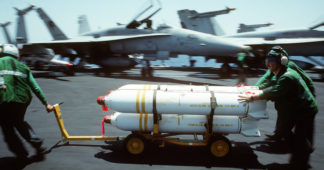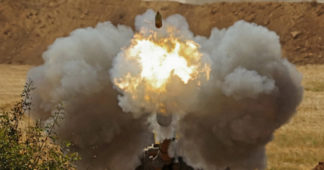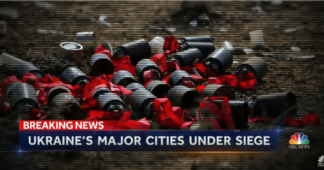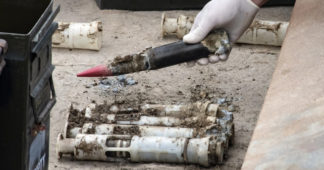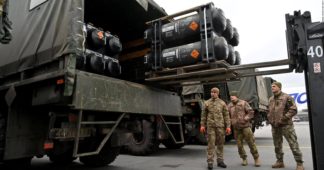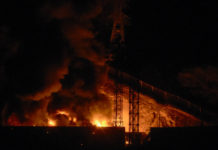Official data backs up earlier reporting on a second Ukrainian source for the controversial weapons.
By Sam Skove
Import records confirm that Ukraine acquired Turkish-made cluster munitions in July, confirming earlier visual evidence and reporting that the war-torn country has a second source for the controversial weapons.
Eighteen shipments of M483A1 cluster munitions shells labeled as Turkish in origin arrived in Ukraine on July 31, according to Ukrainian documents gathered by Import Genius, an aggregator of trade data. Each 155mm shell contains 88 submunitions designed to inflict casualties across a wider area than standard artillery ammunition.
That’s just a few weeks after Ukraine began receiving similar weapons from the United States, whose Biden administration had recently dropped its resistance to Kyiv’s requests for them. Such weapons had already been used by both sides since the Russian invasion. They are widely banned, although not in the United States.
Human rights groups opposed the U.S. decision to send cluster munitions because they can accidentally kill civilians, either in the initial blast or when submunitions belatedly explode weeks, months, or years later. Up to 14 percent of M483A1 submunitions fail to explode when initially fired.
Ukraine’s supporters, however, pointed to the munitions’ utility in suppressing large formations of Russian troops and shoring up the Ukrainian military’s tight artillery supply.
When first announced, the White House said that they would choose rounds with a fail rate of 2.5 percent or less.
The documents confirm a photo that appeared on social media in August that purported to show M483A rounds in Ukraine. Human Rights Watch Associate Arms Director Mark Hiznay identified the weapons as from 1995. In January, Foreign Policy quoted unnamed U.S. and European officials as saying that Turkey had been sending Ukraine cluster munitions since late 2022.
Contrary to previous reporting, it is unclear to what degree Turkey’s government was involved in the decision to send the cluster munitions to Ukraine. Import records list the shipper as Romtehnica, a Romanian trading company owned by Romania’s defense ministry, rather than Turkey. Both Turkey and Ukraine have previously denied that Turkish cluster munitions were being sent to Ukraine.
While the shipments do not list shell quantities or individual prices, Defense One calculations based on total value and weight suggest Ukraine purchased 6,074 shells at a cost of $2,972 a shell. The shells were manufactured between 1994 and 2022, and were refurbished before sending, according to the import documents supplied by Import Genius, a trade database search site.
The July imports were the only ones listed in Import Genius’ database, suggesting that the rounds reported on by Foreign Policy were sent by other means or that the records are not complete.
Two analysts were split on whether Ukraine was purchasing the ammunition at a fair price.
Given the shells’ age, Ukraine may be buying the shells at as much as a 25 percent mark-up over a reasonable price, according to Dean Lockwood, an analyst at Forecast International, a sister brand of Defense One.
A U.S. General Accounting Office report from 1986 said that the government was buying M483A1 shells for roughly $1,064 per shell, when adjusted for inflation. The total price per shell was likely higher, as the projectile cost does not include propelling charges or fuzes.
Mark Cancian of think tank CSIS said that price was likely fair, noting current prices for modern shells. The U.S. Army today pays roughly $3,000 for high-explosive M795 shells, including propelling charges and fuzes, according to an Army spokesperson.
We remind our readers that publication of articles on our site does not mean that we agree with what is written. Our policy is to publish anything which we consider of interest, so as to assist our readers in forming their opinions. Sometimes we even publish articles with which we totally disagree, since we believe it is important for our readers to be informed on as wide a spectrum of views as possible.
